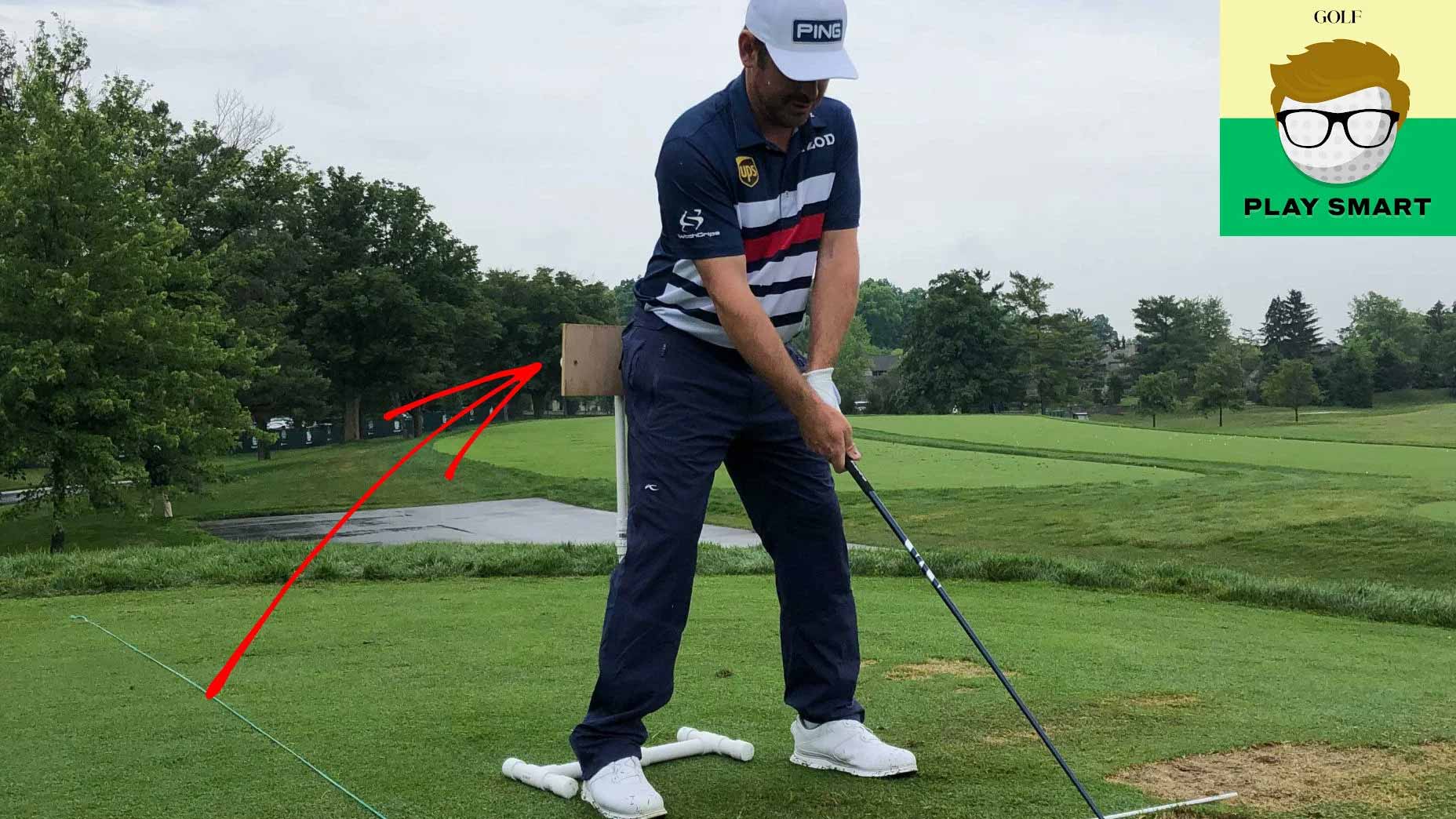Welcome to Play Smart, a game-improvement column that drops every Monday, Wednesday and Friday from Game Improvement Editor Luke Kerr-Dineen to help you play smarter, better golf. Today, we’re talking about U.S. Open first round co-leader Louis Oosthuizen.
What I love about golfers is that at the heart of it, we’re all the same. Whether on Tour or a weekend warrior, we’re always fiddling around with our games, like making a few sneaky swings with that kitchen utensil we see lying around, checking out the move in a mirror we walk past; or, in the case of first round U.S. Open co-leader Louis Oosthuizen, creating a DIY training aid to improve his swing.
Louis has the kind of golf swing that most of us would dream about — in many people’s minds, as close to “perfect” as it comes. But like every golf swing, it can slip into bad habits. For Louis, there’s one in particular: He tends to rush his backswing and not complete his backswing hip turn.
And that can be a big problem.
Because his hips haven’t turned enough on the backswing, they outrace his arms too much on his downswing. His arms get “stuck” behind him and he can’t get them back in front of his body by the time he gets to impact. The result is usually a high-right miss, which we saw at times on Sunday at the PGA Championship last month.
It’s something he and his coach, Justin Parsons, have been working on since the PGA. Parsons says Louis has been doing exercises to improve his hip mobility, but the real breakthrough came when Louis showed up to a lesson with Parsons with a training aid he put together at home. It’s a series of PVC pipes that start on the ground and extend up to his hips, with a plank of wood facing him at the top. Louis will set up to the ball, Parsons will make sure the device is about an inch away from Louis’ backside, and then Louis will swing. Louis goal is to make sure his backswing touches the piece of wood on the backswing, which means he’s completing a full hip turn.
“It gives him a feel of completing his backswing with the correct kind of pelvis movement,” Parsons said. “He likes the feel of it, it helps him understand the correct feeling of loading into his right hip correctly.”
Louis created his invention the week after the PGA, and has used it on the range before his rounds ever since.
Here’s the pair using it at the Memorial, two weeks after the PGA.
Parsons says Louis is a very feel-based player, and while this device may look a little strange to onlookers, it helps him understand the feeling of completing his hip turn.
For Parsons, that means job done.
“With a very feel-based player like Louis…they end up with a more authentic version of what you’re trying to do, because they’re doing it on their own terms,” he says. “If he can make it his idea, he can own it and play better because of it.”
Wise words, certainly proving true this week.
